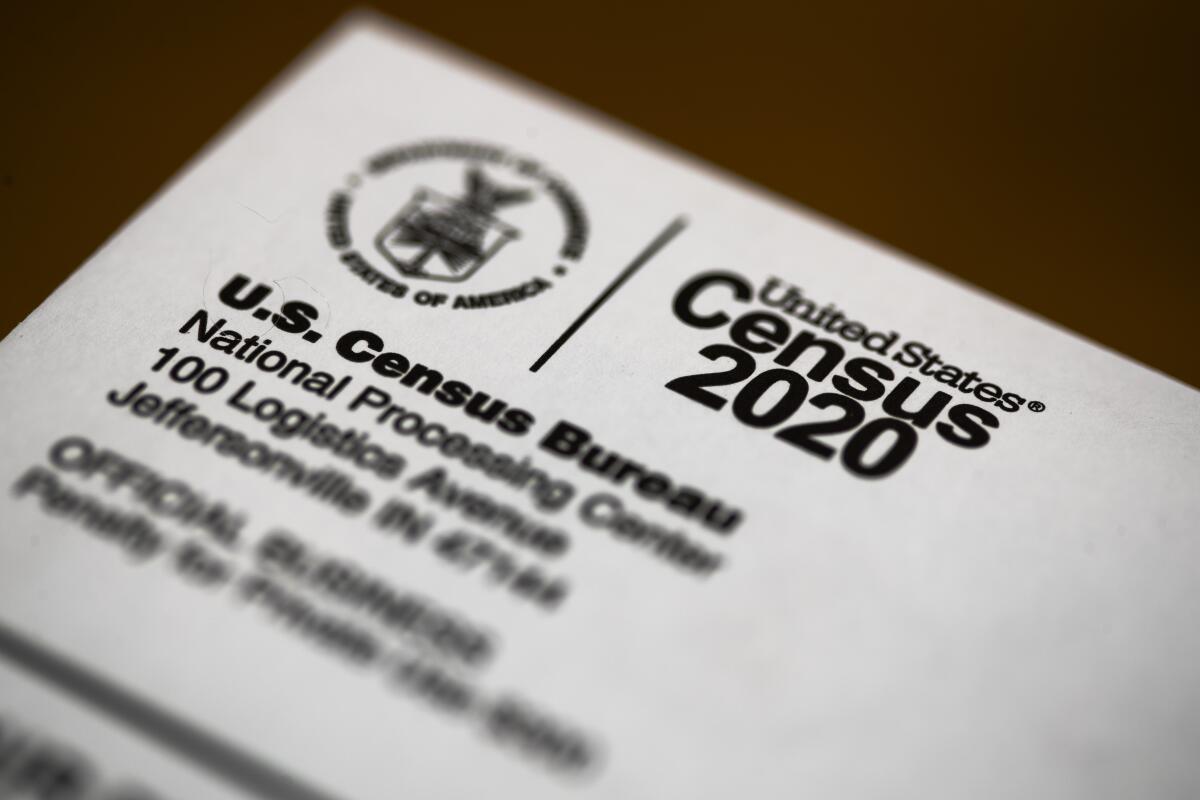Op-Ed: ‘Other’ as the nation’s 2nd-largest race? Latinos and the 2020 census may make that happen

- Share via
As the preliminary 2020 census results continue to trickle out, one statistic may be surprising. The numbers are certain to show that the second-largest racial category in the United States is “other,” after “white.” And upwards of 97% of those who self-classify as “other” will in all probability be Latinos.
In the 2020 census, Latinos are expected to account for more than 20% of the U.S. population — more than 60 million people. But why do so many Latinos choose “other”?
In a sense, those who select “other” as their race are reflecting dissatisfaction with the census’ approach to race. The decennial census only began counting Latinos in a systematic way four decades ago despite the fact they have been a significant presence in the United States since the 19th century — when Mexico turned over to the U.S. vast territories in the West, including California, in 1848 and surrendered any further claims to Texas that same year, and Puerto Rico became an American colony in 1898.
In every census since 1980, Latinos have been counted via a version of what the census calls “the Hispanic ethnicity question” instead of the census race question, which also appears on the form and provides 12 distinct potential answers — white, Black, seven Asian American national origins, American Indian, Native Hawaiian/Pacific Islander and “other.” Since 2000, respondents have been able to identify themselves by any combination of those choices.
Latinos are presumptively considered to be of any race, in part a nod to 400 years of Spanish colonialism in the Americas during which Indigenous peoples, African slaves and their descendants, and Europeans extensively mixed.
Today, however, it makes little sense to say Latinos are an ethnic group as opposed to a racial group. Even census terminology — now ubiquitous in media coverage and government reports — refers to so-called non-Hispanic white and non-Hispanic Black people, which suggests everyone knows Latinos should not be categorized only as white or Black.
Most Latinos recognize this truth. From 1980 to 2010, about 40% of them, according to my analysis, have outright rejected the census race options, instead choosing “other” as their race. When the next batch of 2020 census data is released this summer, we will likely learn that some 24 million to 30 million Latinos will have made “other” the nation’s second-largest race after “non-Hispanic white.”
Census Bureau statisticians have long been perplexed by the racial self-designation of “other” by so many Latinos. For instance, in 1980, they simply folded Latinos who identified as “other” into the white count. My research shows that they used a technique in 1990 and 2000 that allowed them to reclassify “other race” Latinos as Black or white depending on whether they lived in majority-Black or majority-white neighborhoods.
Most Latinos have been compliant with the census’ split ethnicity and race questions, despite routinely voicing either confusion or dissatisfaction with them. On the 2010 census, less than 3% identified as only Black and less than 2% said they were only Native American, while around 6% of Latinos checked two or more racial options. These proportions were dwarfed by the nearly 50% who chose “white” and the almost 40% who chose “other.”
The fact that so many Latinos have rejected all racial categories in favor of “other” finally led the Census Bureau to extensively study how to reformulate its approach to ethnicity and race so that it would reflect how people see themselves and, specifically, reduce Latinos’ selection of “other” as their race. That internal research showed that, when given that option, virtually all Latinos were comfortable designating their race by checking a box that said “Latino.”
Spurred by those findings, officials recommended eliminating the Hispanic ethnicity question on the 2020 census and making “Latino” one of the race options, but the Trump administration rejected the proposal in 2018. The utterly predictable result is that the 2020 census will show the nation’s second-largest race is “other.”
Our decennial census has always included data collection on race, a nod to its centrality in American life and history, whether during slavery, the Jim Crow era or since the modern civil rights movement. Yet racial categories are far from static, continuing to evolve as conditions change.
Until the census catches up to Latinos’ racial reality, we won’t truly know how they are faring compared with other racial groups when it comes to factors as varied as educational inequality, deaths while in police custody, COVID-19 disparities and so many other fundamental social issues of our time.
Laura E. Gómez is a UCLA professor and director of the law school’s Critical Race Studies Program. She is the author of “Inventing Latinos: A New Story of American Racism.”
More to Read
A cure for the common opinion
Get thought-provoking perspectives with our weekly newsletter.
You may occasionally receive promotional content from the Los Angeles Times.










